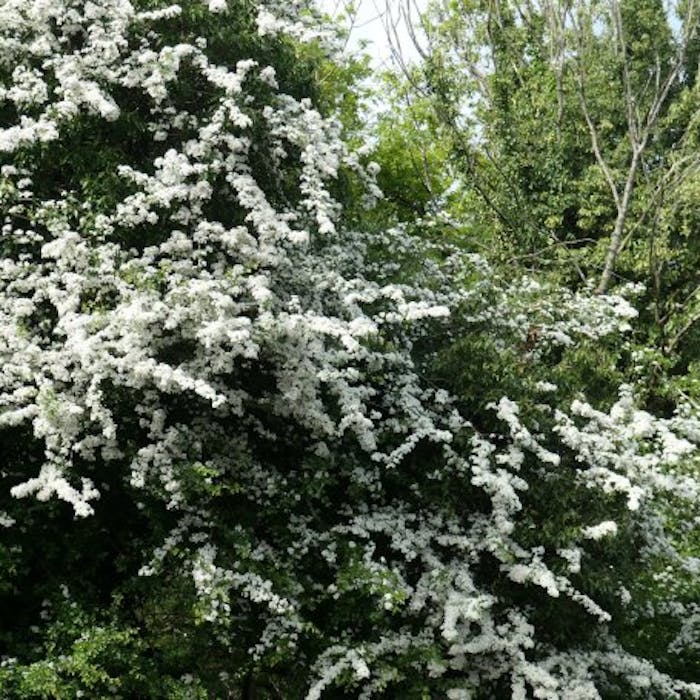
Blackthorn and Hawthorn - bringers of British blossom time
Blackthorn and Hawthorn, also known as May, are prolific British tree and hedgerow bushes that burst into blossom as a sign of spring turning to summer. Blackthorn comes first and is predominantly a cream colour, and then Hawthorn, with a pretty white/pale-pink blossom.
As a home for the fairies and providing the fruits to make gin, hawthorn and blackthorn have been at the heart of folklore for centuries. Still today, it is not unusual to see a solitary ‘Fairy Thorn’ standing in the middle of a country field, left alone for its traditional good omens.
Hawthorn is commonly found growing in hedgerows, woodland and scrub. It has ancient associations with May Day, as a pagan symbol of fertility, and its leaves and flowers appear in the wreaths of the 'Green Man' whose creation is another traditional symbol of May Day. Hawthorn was the ancestor of the Maypole and its leaves and flowers the source of May Day garlands.
Beyond the dramatic burst into bloom that can leave a roadside or copse a veritable cloud of blossom, hawthorn and blackthorn play an important deeper part in our natural landscapes. Planted to make fields stock-proof on account of their thorns, they help capture carbon from the atmosphere and are a welcome source of nectar and pollen for honeybees, particularly our native bumblebees and solitary bees. Both Hawthorn and blackthorn bloom with clusters of delicate flowers. As our native bees come out of hibernation, they are hungry and turn to such sources to fuel up. After pollination, the flowers develop into fruits, which birds and some other animals happily feast upon in the autumn.
The blackthorn flowers before it grows leaves, but with the hawthorn, it is leaves before flowers. The blackthorn comes into bloom first around mid-April and the Hawthorn blossoms a little later, from the beginning of May. This is why it is also known as the May tree. Blackthorn leaves are oval with a toothed edge while hawthorn leaves are deeply lobed with jagged edges.
Blackthorn bark is dark with spiky thorns. Its twigs are black with leaf buds along the sharp spines, while the hawthorn bark is creamy brown and rough. The twigs are brown and slim with thorns which emerge from the buds.
The small blue-black fruits of the native blackthorn are known as sloes, and have been the traditional basis of making gin, wine and jam. The hawthorn has bright red haw berries, which are of more interest to birds and small mammals as a valuable food source. The young leaves, flower buds and young flowers are all edible. They can be added to green salads and grated root salads.
Common hawthorn can support more than 300 insects. It is the foodplant for caterpillars of moths, including the orchard ermine, pear leaf blister and light emerald moths. The dense, thorny foliage makes robust nesting shelter for many bird species.
Mature hawthorn trees can reach a height of 15m and are characterised by their dense, thorny habit, though they can equally grow as a small tree with a single stem or as thick bushes. Hawthorn timber is finely grained and very hard, so can be used in turnery and engraving, for veneers and cabinets; as well as for boxes, tool handles and boat parts. It burns at high temperatures, and makes good firewood and charcoal.
Further reading
- How to tell hawthorn and blackthorn apart? - National Trust
- Hawthorn - Woodland Trust
- The Hawthorn Tree - Queen Of The May - White Dragon
Links to external websites are not maintained by Bite Sized Britain. They are provided to give users access to additional information. Bite Sized Britain is not responsible for the content of these external websites.
